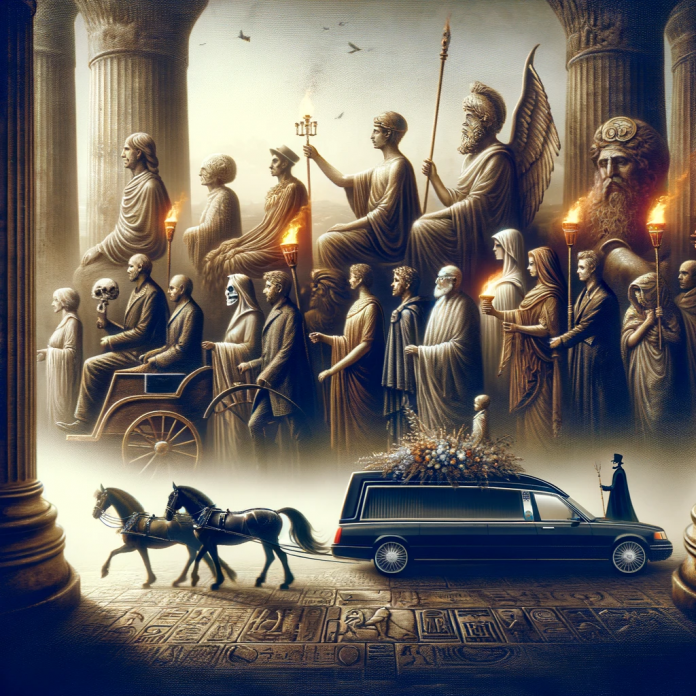Funeral processions have been a significant part of human culture for centuries, marking the final journey of a person's life. These solemn parades have evolved over time, reflecting societal changes and religious beliefs. This comprehensive exploration delves into the history of funeral processions and their evolution.
The Ancient Beginnings of Funeral Processions
The tradition of funeral processions dates back to ancient civilizations. The Egyptians, Greeks, and Romans each had their unique customs and rituals associated with deathand the afterlife.
The ancient Egyptians, for instance, held elaborate processions to accompany the deceased to their final resting place. These processions often included family members, priests, and professional mourners. The body, preserved through mummification, was carried in a decorated boat-like vehicle, symbolizing the journey to the afterlife.
Greek and Roman Funeral Processions
The Greeks and Romans also held funeral processions, but their practices were markedly different from those of the Egyptians. Greek processions were typically held at dawn and included a procession of mourners, musicians, and a horse-drawn hearse carrying the body. The Romans, on the other hand, held funeral processions at night, with torch-bearing participants and elaborate displays of the deceased's achievements.
Both Greek and Roman funeral processions served as public demonstrations of grief and respect for the deceased. They also reflected the social status of the deceased, with wealthier individuals often having more elaborate processions.
The Middle Ages and Funeral Processions
The Middle Ages brought significant changes to funeral processions, largely influenced by Christian beliefs. The focus shifted from a public display of grief to a more solemn and religious event.
During this period, the body was often carried from the home to the church by pallbearers, followed by family members and other mourners. The procession was usually led by a cross or a religious figure, symbolizing the Christian belief in resurrection.
The Influence of Plague on Funeral Processions
The outbreak of plague in the Middle Ages also had a profound impact on funeral processions. As death became a frequent occurrence, processions became less elaborate and more hurried. This was a stark contrast to the grand processions of earlier times, reflecting the grim reality of the period.
Despite these changes, the fundamental purpose of the procession remained the same: to honor the deceased and provide comfort for the living.
Funeral Processions in Modern Times
Modern funeral processions have continued to evolve, reflecting societal changes and advancements in technology. Today, processions often involve a motorcade of vehicles, with the hearse leading the way to the cemetery or crematorium.
Despite these changes, the procession remains a significant part of the funeral ritual. It provides a sense of closure for the bereaved and serves as a final tribute to the deceased.
The Role of Technology in Funeral Processions
Technology has also influenced the way we conduct funeral processions. Live-streaming services, for instance, allow those who cannot physically attend the procession to participate virtually. This has been particularly relevant during times of global crises, such as the COVID-19 pandemic.
Furthermore, advancements in transportation have made it possible for processions to cover greater distances, allowing more people to pay their respects along the route.
Conclusion
The history of funeral processions is a fascinating journey through time, reflecting our evolving attitudes towards death and mourning. From the elaborate processions of ancient civilizations to the solemn parades of the Middle Ages and the technologically-enhanced processions of today, these rituals continue to play a crucial role in our farewell to the departed.
As we look to the future, it is likely that funeral processions will continue to evolve, shaped by societal changes and technological advancements. Yet, their core purpose will remain the same: to honor the deceased and provide comfort for the living.


-banner.png)





